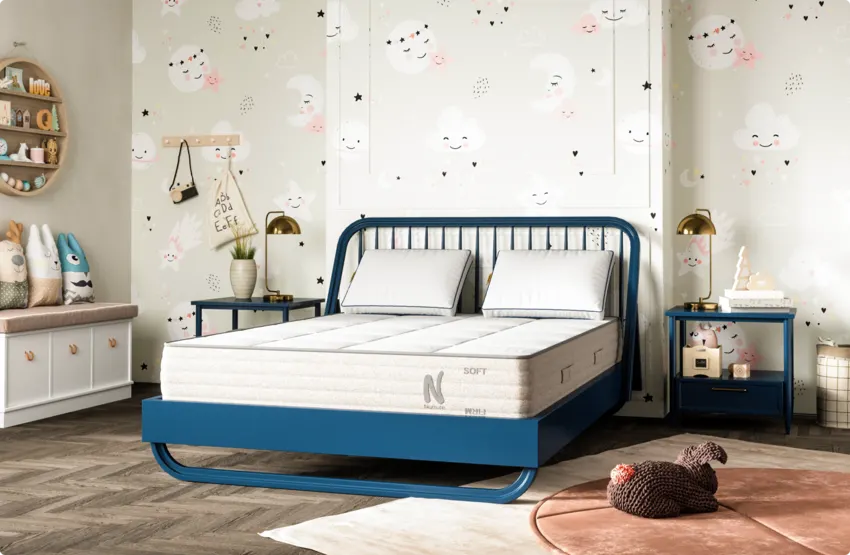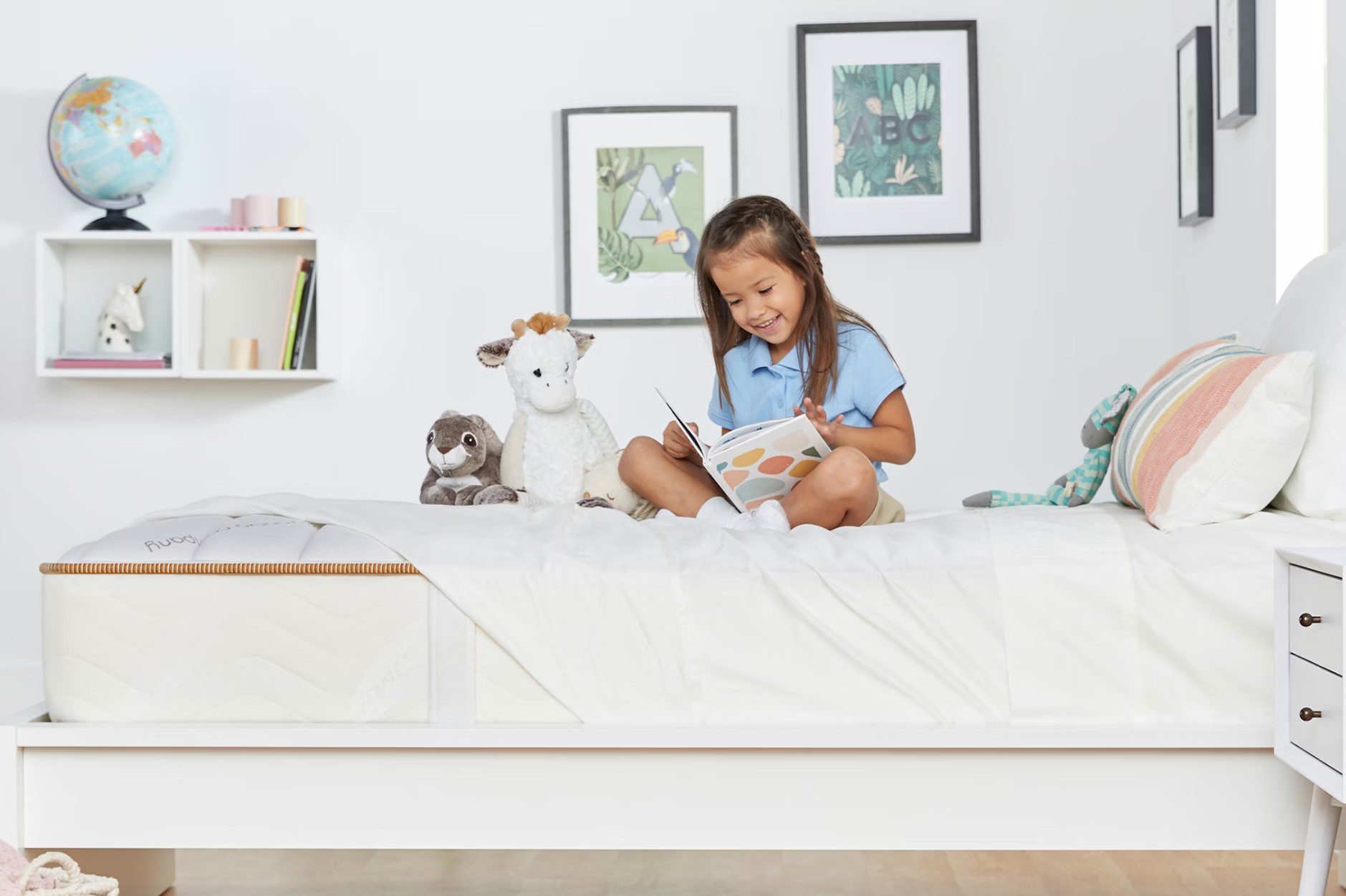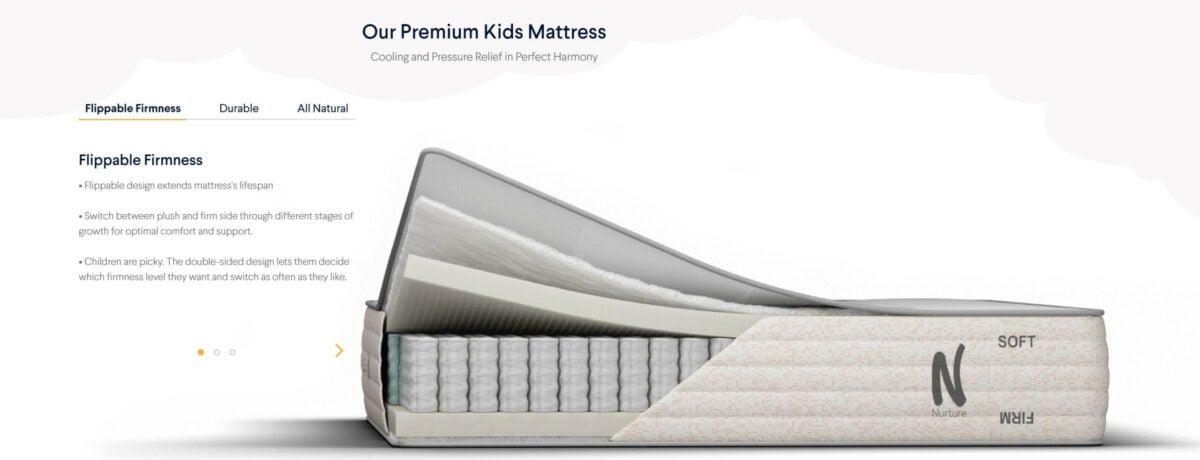As parents, our primary concern is to provide our children with the best possible care and comfort. Ensuring they have a good night’s sleep is a crucial aspect of this, and choosing the right mattress plays a significant role in promoting healthy growth and development while reducing the risk of sleep-related issues. In this comprehensive guide, we will delve into the key factors that you need to consider when selecting the perfect kids mattress, so your little one can enjoy a restful night’s sleep.
The first step in choosing the right mattress for your child is determining the appropriate size. Twin and full-size mattresses are popular choices for kids’ rooms, as they offer enough space for a comfortable sleep without taking up too much floor space. If you have limited room, a twin-size mattress may be the better option, while a full-size mattress can provide extra sleeping space for a growing child if space permits.
With various mattress types on the market, it’s important to understand the unique benefits each one offers. Innerspring mattresses are a traditional option that features a coil support system. While they provide adequate support and durability at a budget-friendly price point, some children may find the presence of springs less comfortable. Memory foam mattresses contour to the body and offer excellent support and pressure relief. These are suitable for children who experience growing pains or have specific comfort preferences, but keep in mind that they can retain heat, making them less ideal for hot sleepers. Latex mattresses are eco-friendly, hypoallergenic, and highly durable, providing great support and pressure relief. This makes them an excellent choice for children with allergies or sensitivities, although they can be more expensive than other options.
When it comes to firmness, a medium-firm mattress is generally recommended for children. This level of firmness provides the right balance of support and comfort. A mattress that is too soft can lead to improper spinal alignment, while one that is too firm may cause discomfort.
Safety should always be a priority when choosing a kids mattress. Look for certifications such as CertiPUR-US or GreenGuard Gold, which indicate that the mattress is made without harmful chemicals and meets low VOC (Volatile Organic Compounds) emission standards. If your child suffers from allergies or sensitivities, consider a hypoallergenic mattress or one with a removable and washable cover. Organic mattresses made from natural materials can also be an excellent choice for children with sensitivities.
Budget is another essential factor to consider when shopping for a mattress. Keep in mind that investing in a quality mattress is crucial for your child’s health and well-being. However, there are affordable options available that still offer great support and comfort.
Finally, it’s important to look for a trial period and a solid warranty when purchasing a kids mattress. Many mattress companies offer trial periods, allowing you to test the mattress at home and return it if it doesn’t meet your child’s needs. Ensure the mattress comes with a warranty, typically at least 10 years, to protect your investment.
By taking these factors into account and conducting thorough research, you will be well-equipped to choose the perfect kids mattress for your child, ensuring a comfortable, supportive, and safe sleeping environment for many nights to come.
How Long Do Kids Mattresses Last?
The lifespan of a kids mattress largely depends on its quality, materials, and how well it is maintained. Generally, a well-crafted mattress can last anywhere from 7 to 10 years. However, there are some factors to consider that may impact the longevity of your child’s mattress.
Higher-quality mattresses made from durable materials, such as latex or high-density memory foam, tend to have a longer lifespan. In contrast, lower-quality mattresses or those made from less durable materials, like low-density memory foam or certain innerspring systems, may need to be replaced more frequently.
Proper maintenance also plays a significant role in extending the life of a kids mattress. Regularly rotating the mattress (every three to six months) can help distribute wear and prevent sagging or indentations. Using a mattress protector will shield it from spills, stains, and allergens, further preserving its quality and ensuring a healthy sleep environment for your child.
It’s important to monitor the condition of your child’s mattress throughout its lifespan. Keep an eye out for signs of wear, such as sagging, lumps, or increased discomfort during sleep. These may indicate that the mattress is no longer providing the proper support and comfort your child needs for a restful night’s sleep.
At What Age Should Your Child Get A Kids Mattress?
Most children transition from a crib to a toddler or kids bed between the ages of 18 months and 3 years old. This transition is prompted by several factors, including the child’s size, mobility, and developmental milestones. Here are some signs that it might be time to move your child from a crib mattress to a kids mattress:
Safety concerns: If your child is starting to climb out of the crib or reaches a height of 35 inches (approximately 89 centimeters), it might be time to move them to a kids bed. Climbing out of the crib can be dangerous and result in falls or injuries.
Outgrowing the crib: As your child grows, they may become too big for their crib mattress, leading to discomfort and reduced sleep quality. A kids mattress will provide more space and support for their growing body.
Potty training: If your child is potty training or has already been potty trained, they may need to access the bathroom independently during the night. A kids bed allows them to get in and out of bed without assistance.
Sibling needs: If you have another child on the way and need the crib for the new baby, it may be a good time to transition the older sibling to a kids bed.
When transitioning your child from a crib mattress to a kids mattress, it’s essential to ensure their safety and comfort. Choose a bed that is low to the ground or equipped with guardrails to prevent falls. You can also opt for a convertible crib that transforms into a toddler bed, providing a familiar and comfortable environment for your child during the transition.
In conclusion, the appropriate age for a child to move from a crib mattress to a kids mattress is typically between 18 months and 3 years old, depending on the child’s growth, development, and individual needs. Keep an eye out for signs that your child is ready for this transition, and take necessary precautions to ensure their safety and comfort in their new bed.
Our Top Picks for Crib Mattresses
| Product Image | Description | Product Name / Primary Rating / Price | Primary Button / Secondary Button |
|---|---|---|---|
|
|
||
|
|
||
|
|
||
|
|
||
|
|
||
|
|
8" hybrid mattress with 6" innersprings and custom foam layers to provide the right safety, comfort, support, and durability for growing kids with changing needs and preferences.
Crafted our hybrid Eco Organic Kids Mattress in Los Angeles with 660 6” pocketed coils and 100% GOLS certified organic latex from our own sustainable farms in India and Guatemala for soft, contouring support. 100% GOTS certified organic cotton and wool deliver breathable, luxurious comfort.
The Nolah Nurture 10" Mattress pairs pressure-relieving Talalay latex with targeted support from individually-wrapped coils. It also features an organic cotton cover and organic wool for cooling comfort. Plus, the Nurture offers two-sided flippable firmness, making it a perfect fit for every stage of your child's development.
Dual-sided youth mattress is specifically designed to help growing kids ages 3 to 12 reach their full potential through great sleep. It's handcrafted with the same eco-friendly, high-quality materials as all Saatva mattresses to provide exceptional comfort and support for growing bodies
The first company to bring to the market a mattress in a box solution for kids. The Puffin Memory Foam Kids Bed is a mattress made exclusively for kids and young people. Made in the USA, Factory Direct, CertiPUR-US certified foams, no chemical fire barrier, nothing toxic.
Made exclusively for kids and young people. Made in the USA, Factory Direct, CertiPUR-US certified foams, natural latex, no chemical fire barrier, nothing toxic.














